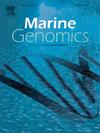Carbon fixation by chemoautotrophic microorganisms in the dark ocean makes a large contribution to oceanic primary production and the global carbon cycle. In contrast to the Calvin cycle-dominated carbon-fixing pathway in the marine euphotic zone, carbon-fixing pathways and their hosts in deep-sea areas are diverse. In this study, four deep-sea sediment samples close to hydrothermal vents in the southwestern Indian Ocean were collected and processed using metagenomic analysis to investigate carbon fixation potential. Functional annotations revealed that all six carbon-fixing pathways had genes to varied degrees present in the samples. The reductive tricarboxylic acid cycle and Calvin cycle genes occurred in all samples, in contrast to the Wood–Ljungdahl pathway, which previous studies found mainly in the hydrothermal area. The annotations also elucidated the chemoautotrophic microbial members associated with the six carbon-fixing pathways, and the majority of them containing key carbon fixation genes belonged to the phyla Pseudomonadota and Desulfobacterota. The binned metagenome-assembled genomes revealed that key genes for the Calvin cycle and the 3-hydroxypropionate/4-hydroxybutyrate cycle were also found in the order Rhodothermales and the family Hyphomicrobiaceae. By identifying the carbon metabolic pathways and microbial populations in the hydrothermal fields of the southwest Indian Ocean, our study sheds light on complex biogeochemical processes in deep-sea environments and lays the foundation for further in-depth investigations of carbon fixation processes in deep-sea ecosystems.


